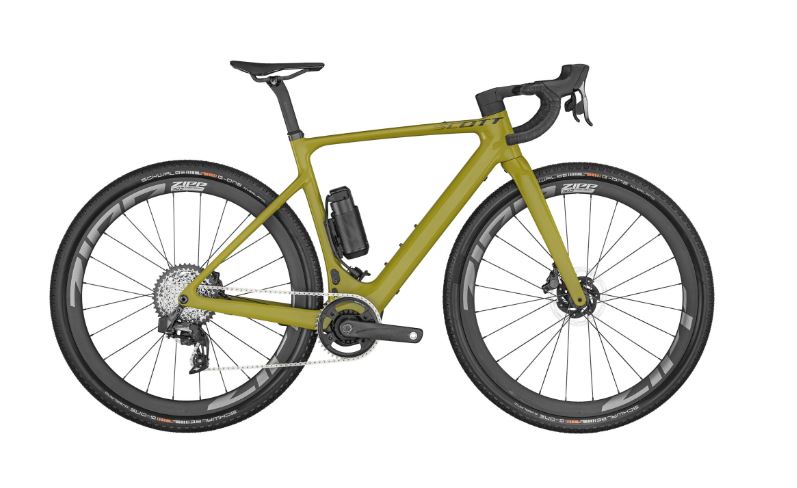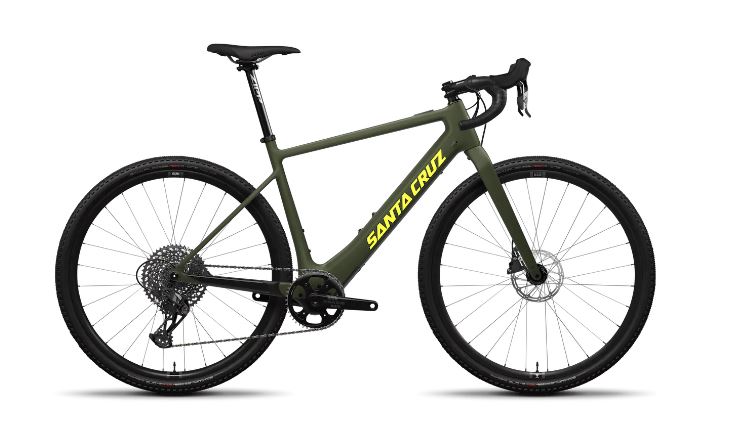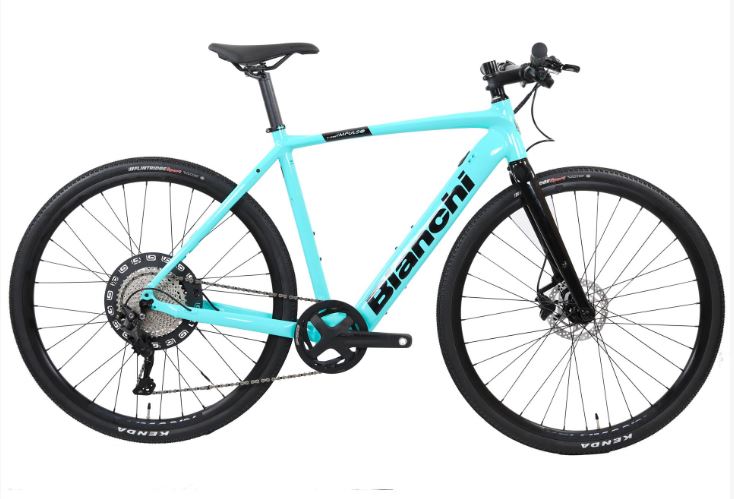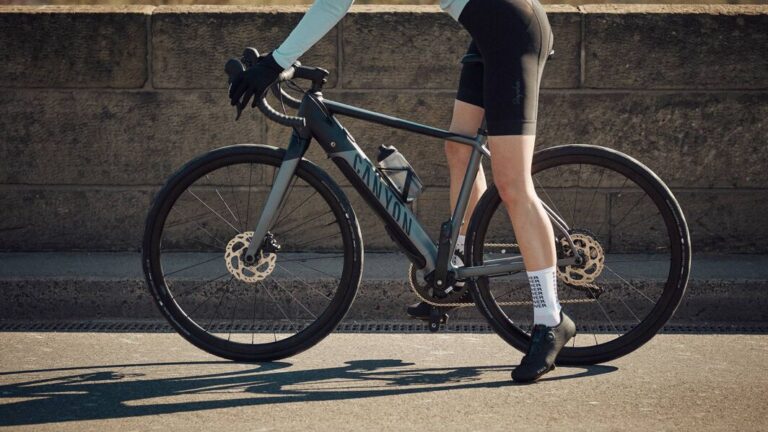Understanding Gravel E-Bike Power Systems

Key Point Summary of Understanding Gravel E-Bike Power Systems:
- Gravel E-Bike Power Systems: A combination of motor and battery that assists pedaling, extending the rider’s capability and range.
- Motor Types: Typically, mid-drive motors are preferred for their efficiency and balanced weight distribution, enhancing the bike’s handling on varied terrain.
- Battery Efficiency: Factors affecting efficiency include the battery’s capacity, the rider’s weight, terrain type, and assistance level used. Battery management is crucial for maximizing ride distance.
As someone who’s spent a considerable chunk of my life pedaling across various terrains on mountain bikes, gravel bikes, and cyclocross bikes, I’ve seen firsthand the evolution of cycling technology. Now, with the advent of e-bikes, the landscape is shifting even more dramatically, and it’s an exciting time to be a cyclist. Gravel e-bikes, in particular, have caught my attention recently.
These bikes are redefining what’s possible on mixed-terrain adventures, blending the thrill of exploration with a welcome boost when you need it most. So, let’s dive into the world of gravel e-bike power systems, and I’ll share some insights from my journey, aiming to illuminate this topic for cyclists with beginner to mid-level experience.

Motor Types: The Heart of the E-Bike
Gravel e-bikes are equipped with electric motors that supplement your pedaling effort, making climbs feel less daunting and allowing you to cover more ground with less fatigue. Through my races and rides, I’ve encountered two main types of motors: hub motors and mid-drive motors.
- Hub Motors: These are positioned in the center of either the front or rear wheel. While hub motors can be more affordable and simpler in design, they often shift the bike’s weight distribution, which can affect handling—something you notice quickly when navigating tricky gravel descents.
- Mid-Drive Motors: These are located at the bike’s crankset, where the pedals are. This central placement ensures a more balanced weight distribution, crucial for the unpredictable and varied surfaces gravel riding throws at you. From my experience, mid-drive motors offer a more natural riding feel, especially when power is applied smoothly as you pedal. This type makes tackling steep hills on gravel or dirt feel almost like you’re getting a friendly push from behind.
Battery Efficiency: The Lifeline of Your Ride
The battery is what keeps the electric motor running, and its efficiency is a pivotal aspect of any e-bike system. Battery efficiency is influenced by several factors, such as capacity (measured in watt-hours), the terrain you’re riding on, and how much you’re relying on the motor.
From long rides across rolling hills to steep, challenging climbs, I’ve learned that managing your battery’s efficiency is an art. On one memorable ride, I underestimated the terrain’s demand on my e-bike’s battery and found myself with a dwindling charge miles from home. It taught me the importance of understanding my bike’s battery capacity and adjusting my usage accordingly.
- Battery Capacity: This determines how far you can go on a single charge. Higher capacity batteries last longer but are also heavier and more expensive. Balancing your needs with the battery’s specifications is key to finding the right e-bike.
- Rider Input and Terrain: The more you pedal and the smoother the terrain, the less the motor has to work, extending your battery life. Conversely, constant motor use on rough, hilly terrain will drain the battery faster.
- Assistance Levels: Most e-bikes offer different levels of pedal assistance. Using a lower assistance level when conditions allow can significantly extend your battery life, letting you explore further with confidence.

Personal Anecdotes and Insights
Throughout my cycling journey, I’ve experienced the thrill of pushing my limits on traditional bikes and the joy of exploring further with the help of e-bikes. Here are a few insights I’ve gained:
- The Joy of Exploration: With a gravel e-bike, I’ve ventured onto trails and paths that would have been too daunting or exhausting before. The added boost has opened up new landscapes and adventures, making every ride an opportunity to discover something new.
- Learning Curve: Adapting to the power system of a gravel e-bike took some getting used to. At first, managing the motor’s assistance felt a bit like learning to ride all over again, but it quickly became second nature. Now, I find joy in the blend of manual effort and electric assist, especially on long, challenging climbs.
- Community and Sharing: Riding e-bikes has also been a way to connect with a wider cycling community. I’ve met fellow riders of all ages and abilities, each with their own story of how an e-bike has transformed their riding experience. Sharing tips, routes, and battery management strategies has enriched my own understanding and appreciation of these incredible machines.

Wrapping Up
Gravel e-bikes represent a significant advancement in cycling technology, offering riders the chance to explore further and with less strain. Understanding the nuances of power systems, from motor types to battery efficiency, can greatly enhance your riding experience. Whether you’re tackling steep climbs, long-distance adventures, or simply enjoying the freedom to explore more of the world on two wheels, gravel e-bikes offer a thrilling new dimension to cycling.
As I continue to ride and race across various terrains, the lessons learned from each pedal stroke on my e-bike remain invaluable, reminding me of the endless possibilities that lie ahead on the open road. Here are my top three picks for gravel e-bikes, ideal for those looking to blend the thrill of exploration with the benefits of electric assist:
1. Specialized Turbo Creo SL Expert
The Specialized Turbo Creo SL Expert redefines what’s possible in the realm of gravel e-biking. It’s impressively lightweight for an e-bike, thanks in part to its SL 1.1 motor, which is both powerful and quiet. This bike offers a smooth ride with ample power on demand, making steep climbs and long rides more manageable and enjoyable. The Creo SL also features a Future Shock 2.0 suspension system that provides a comfortable ride on rough terrain. Its battery efficiency and range extender compatibility mean you can venture further without worry. The Turbo Creo SL strikes an excellent balance between performance and usability, making it a top choice for serious gravel riders.
2. Canyon Grail:ON
Canyon’s foray into electric gravel bikes has been a game-changer with the Grail:ON. This bike is designed specifically for off-road performance, featuring a powerful Bosch Performance CX motor that offers significant torque for tackling steep inclines. What sets the Grail:ON apart is its innovative double-decker handlebar and carbon frame, which provide comfort and control on long, bumpy rides. The bike’s geometry is optimized for gravel riding, offering a stable and responsive ride. With a focus on durability and power, the Grail:ON is an excellent choice for adventurers looking to push their limits on gravel trails.
3. Trek Domane+ LT
The Trek Domane+ LT stands out for its elegant integration of the Fazua Evation drive system, which provides a natural riding feel with enough power for challenging terrains. This system is also removable, offering the flexibility to ride with or without the motor and battery, a feature that appeals to cyclists who want the option of a traditional ride experience. The Domane+ LT doesn’t compromise on performance, with a lightweight carbon frame and IsoSpeed decoupler that smooths out road vibrations. It’s a versatile bike that excels on both gravel and road, making it a great option for riders who enjoy mixed-terrain adventures.
John

FAQ
Is there a big difference between 500W and 750W ebike?
Yes, there is a noticeable difference between 500W and 750W e-bikes. A 750W motor will generally offer more power and torque, making it better suited for climbing steep hills and accelerating more quickly. However, this increased power can also reduce battery range if used frequently at its higher output levels.
What is the difference between 250W and 1000W ebike?
The difference between a 250W and 1000W e-bike is significant. A 1000W motor offers considerably more power and torque, allowing for higher speeds, better acceleration, and superior hill-climbing ability. This makes a 1000W e-bike better suited for challenging terrains and heavier riders. However, it also means increased battery consumption and potentially shorter range, along with different legal restrictions in some areas due to its higher power output.
What does 36V 10ah mean?
36V 10ah refers to the battery’s voltage and ampere-hour rating, respectively. A 36V (volt) battery indicates the potential energy difference it can supply, while 10ah (ampere-hours) signifies its capacity. In simpler terms, it means the battery can deliver 10 amps of current for one hour at a voltage of 36 volts. The overall energy capacity of this battery would be 360 watt-hours (Wh), calculated as voltage (V) times ampere-hours (Ah).
What is the difference between Class 1 and Class 3 Ebikes?
Class 1 e-bikes are pedal-assist without throttle, with assistance up to 20 mph. Class 3 e-bikes, also pedal-assist but without throttle, offer assistance up to 28 mph and often include a speedometer. Class 3 e-bikes face more restrictions on trails and paths compared to Class 1.





